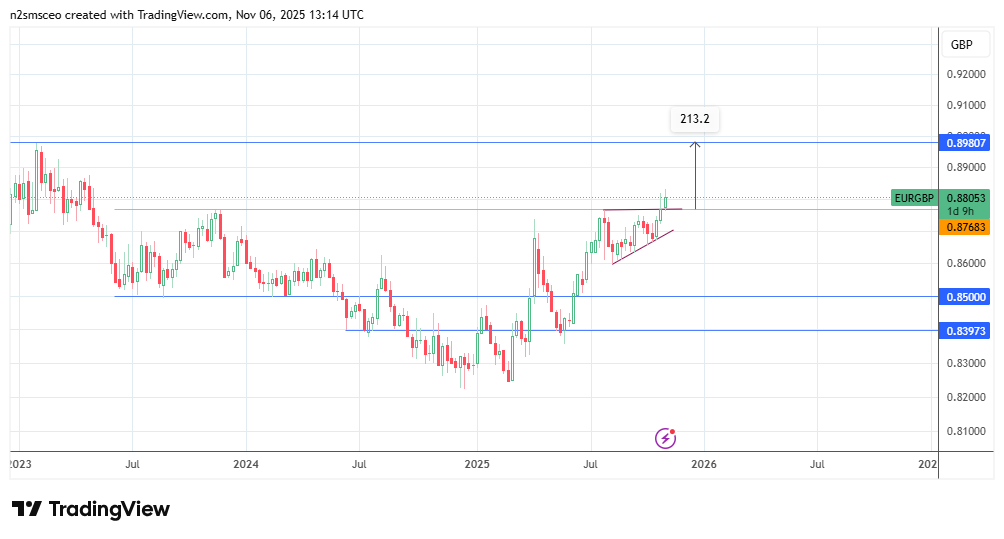- The BoE's dovish hold and softer language from BoE Gov Andrew Bailey raises the chances of a Dec 2025 rate cut.
The Bank of England delivered a dovish hold; keeping interest rates at 4.00% and voting by a 0-4-5 (raise-cut-hold) decision on this. The voting pattern was more dovish than expected, as polled Economists had expected the BoE MPC to vote 0-3-6. The decision is clear: nearly half of the MPC want UK interest rates to head lower.
A look at the growth and inflation projections of the BoE give some insight as to what guided the voting pattern on the day.
- MPC Inflation Projections: the monetary policy committee is of the view that UK inflation has peaked. It now forecasts that inflation would come down to the bank’s 2.0% target in Q2 2027, reiterating its August forecast.
- Growth Projections: the UK economy is expected to grow 1.4% in 2025 and 2026, an upward revision for 2025 but a downgrade for 2026.
- Policy Guidance/Minutes: the BoE maintains its guidance on rates being on a gradual downward path, but the growing divide among the MPC members has now been explicitly highlighted. BoE Gov Andrew Bailey and four other members voted to hold rates at 4.00%, citing a preference to wait for additional evidence of further disinflation. This view was not shared by the other four dissenting members, who believe that disinflation is already well established as to warrant further policy easing. They also cited a weaker labour market and a dropoff in consumption as further evidence that the time was right to cut rates.
The dovish hold and the tapering of the language of the BoE Governor from previous hawkish statements has given the market a sign of a potential rate cut in the December 8, 2025 meeting. Gilt yields also dropped, signalling a higher repricing in anticipation of a BoE rate cut in Q1 2026.
Market Implied Probability for a BoE Rate Cut
The initial market reaction to the BoE’s dovish hold indicates the significant nature of the more dovish than expected 0-4-5 vote. This vote has pushed the December BoE rate cut probability from 25%-35% pre-BoE, to 60%-69%. This is a strongly dovish repricing and indicates a significant chance of a 25 bps rate cut at the December 18 meeting.
Gilt yields, which were already heading south, have dropped further. This indicates greater confidence that the Official Bank Rate would head lower in the first quarter of 2026.
BoE Rate Decision Live: EURGBP Reaction
The active weekly candle pushed higher after the news hit the wires, reflecting GBP weakness. However, the candle is off highs, which favours a bias to buy on pullbacks to the closest support mark.
The chart structure is that of an ascending triangle. However, if combined with the initial uptrend move, this can be considered to be a bullish pennant pattern.

Price is now at 0.8805, trading above the immediate support formed by the breached upper flag border at 0.8768. The expectation is for price continuation to the projected target at 0,8980, the prior high of January 2023.
However, a breakdown of this support level provides a basis for invalidation of the dip-buying move, which unlocks the downside target at 0.8500, the August 2023 and March 2024 support levels. A hawkish surprise or recalcitrant CPI is the trigger for such a move.
Keep an eye on the November 26 Autumn Budget Speech by UK Chancellor Rachel Reeves. She is widely expected to announce sweeping tax increases aimed at plugging a £20-50 billion deficit. A tighter fiscal budget and another soft CPI print may be all that is needed to boost the EURGBP’s upside move in the weeks to come.


